Gardener tips: how to grow radishes outdoors
Radish is a fairly early ripening vegetable. It is often grown in greenhouses. But you can do this action in the open field. To do this, you need to know just a few simple rules and even an inexperienced gardener can handle the process.
Content:
- Features of soil preparation
- Planting methods for radish
- Features of radish care
- Pests and diseases of radish
Features of soil preparation
In order for the radish to fully grow and develop, it needs to prepare a favorable soil. When planting radishes, you must remember that its soil should be as loose as possible. If such soil is not provided for this plant, then cracks will form on its fruits. That is why, before planting radishes, the soil is dug up and the appropriate fertilizers are introduced into it.
The ideal option for planting this plant is super-sandy, slightly acidic soil.
Fertilizing the soil:
- In order for radish to form root crops correctly, it needs to provide an optimal amount of mineral fertilizers. These fertilizers include potassium salt and superphosphate.
- Fertilization of the soil directly depends on the planting period of this plant. When applying fertilizers, you need to know that fresh manure adversely affects radishes. That is why it is by no means worth using it as fertilizer.
- Fertilization of the soil should be done in advance. For example, if radish planting is planned for the spring, then the soil is fertilized in the fall.
- Per square meter of the plot allocated for radish, it is necessary to bring at least one bucket of manure, which is overfilled.
The choice of a place for planting this plant also plays an important role. This culture is very fond of lighting. and therefore must be planted in very well-lit areas. Also, the planting site of this plant must be reliably protected from the wind.
Planting methods for radish
There are three ways to grow radishes outdoors:
- Spring
- Winter
- Let's winter
The podzimny method of planting this plant consists in sowing seeds in the month of November. In the event that at this moment the ground is frozen, then dry seeds must be sown into the ground. After sowing radish seeds, they are covered with humus. This method of planting this plant requires the choice of a southern or southeastern site. Also, when planting radishes in the winter period, it is necessary to pay attention so that in the autumn period the place is not flooded with submerged waters.
In order to get radish shoots not two weeks earlier than during spring planting, it is planted in winter.
When using this method of planting, the beds are prepared in the fall. For this, grooves are cut, the width of which is five centimeters. During a snowy winter, snow is removed from the beds before planting radishes. Seeds are sown into the prepared grooves, and they are covered with peat on top.
The spring method is most often used when planting this plant:
- Planting radish after the retreat of winter cold.
- Radish is planted directly into open ground.
- The planting time of radishes in spring directly depends on the characteristics of the region.
- Most often, radishes are planted from late April to early May.
- Planting radishes is carried out only when a long-term temperature is established at +15 degrees. In this case, the night temperature should not be lower than +5 degrees.
- Before planting the seeds, the beds are dug up and grooves are made in them.
- The distance between the grooves should be at least twenty centimeters.
- Planting seeds can be done in whole handfuls. Crops are dug in and moistened abundantly.
If the need arises for the emergence of seedlings a few days earlier, the place of planting of this plant is covered with a film. The first shoots of radish appear within five days. Most often, a large number of seeds are used for planting radishes, so the first shoots appear crowded.
In order for the radish not to "stack", it must be weeded. For this, the strongest plants are selected. 2-3 seedlings are left after 5-6 centimeters. After a few days, the strongest are selected from these seedlings, and the rest are pulled out.
Features of radish care
In order for the fruits of the radish to be large and juicy, it needs to be weeded regularly. This not only removes weeds, but also loosens the soil, which has a beneficial effect on the size of the fruit. Also, this plant needs watering. In very dry soils, the fruits of the radish will taste small and bitter, and the ground part will begin to throw out arrows. Thinning of a given plant should only begin when the seeds are mostly germinated. This action is carried out approximately 5-7 days after sowing when the rows are clearly visible.
After the final thinning, the radishes must be watered with a watering can for rooting.
This is necessary, since during thinning, the root system of the radish can be disturbed, which may not strengthen without water. Watering the radish is necessary from a watering can. On average, two liters of water must be poured over one square meter of the garden bed.
Also, after planting radishes, he needs to ensure timely fertilization. As fertilizer uses urea and mullein... You need to take one teaspoon of urea, and one glass of mullein. With five liters of the resulting solution, you can process 1 square meter of the garden. Thanks to the introduction of these fertilizers, the development of radish will be significantly accelerated. In order to limit the radish from the possibility of a pest attacking it, before weeding the beds, it is necessary to pour ground pepper or dry mustard in an amount of 1 teaspoon per 1 square meter.
Harvesting is done as it ripens. If the fruits have reached normal size, then they must be harvested. To do this, you just need to gently pull the plant by the stem.
Pests and diseases of radish
Radishes can be affected by weevils, cabbage moths, cabbage fly larvae and many others.
In order to limit the possibility of these pests, it is necessary to sprinkle the beds with ordinary wood ash. Before planting this plant, you should not use wood ash, as it can cause the appearance of arrows, which will negatively affect the harvest. If radish is damaged by pests, it is necessary to immediately begin to combat them.
Radish pests and diseases:
- If you find a weevil beetle in the garden, then you need to spray the plant with special insecticides. Also, to prevent the appearance of this pest, you can plant garlic and onions around the garden garden. Cabbage moth attacks the ground part of this plant, which negatively affects the yield. When this pest appears, the garden with radishes must be treated with antibacterial drugs.
- Cabbage fly larvae are a very dangerous enemy of radishes. Therefore, when they appear, you must immediately begin to fight them. When this pest appears, the plant bed is treated with special insecticides or wood ash.
- Radishes can also be affected by diseases such as powdery mildew, black leg, white and gray rot, etc. Powdery mildew appears on radish leaves as a white bloom. When the first signs of the disease appear, you must immediately begin to fight it. For this purpose, both chemical and bacterial methods can be used. With the bacterial control method, special spray preparations are used. When using a chemical method, the use of fungicides is required. Also, when this disease appears, it is imperative to remove the affected leaves of the plant.
- When a black leg appears on a radish, it is necessary to start fighting it immediately, otherwise it will destroy not only the ground part, but also the fruits of the radish. To do this, it is necessary not to overmoisten the soil during watering, and also to carry out regular loosening. You can also use insecticides to combat disease. White and gray rot can occur on the tops and top of the radish fruit, located above the ground. At the first signs of this disease, it is necessary to remove the affected plants from the garden, and also treat them with special preparations.
Growing radishes in the open field is a fairly simple process, which consists in sowing, caring for and controlling pests and diseases.
More information can be found in the video.




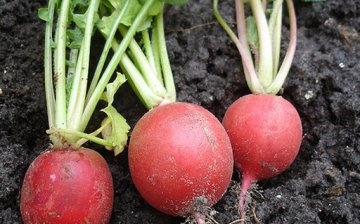
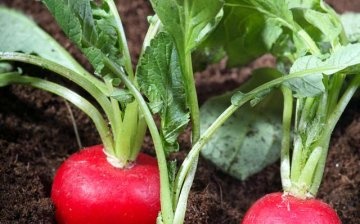
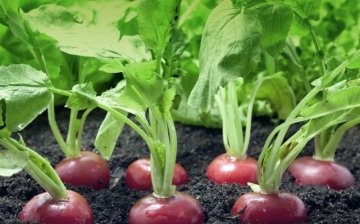
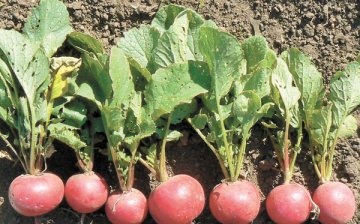





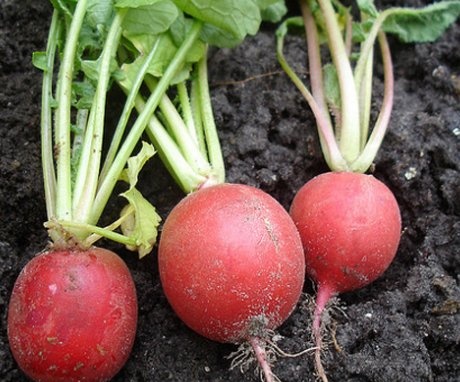
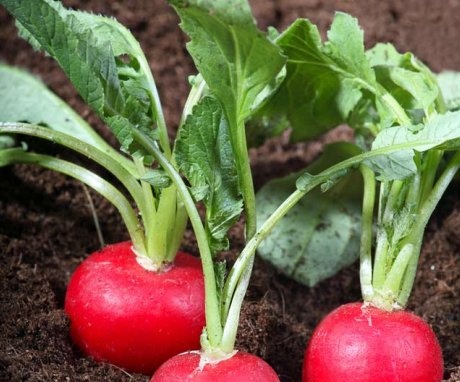
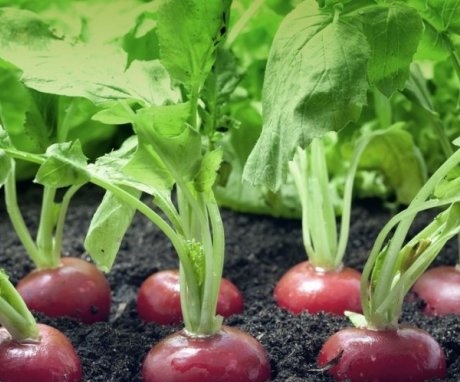
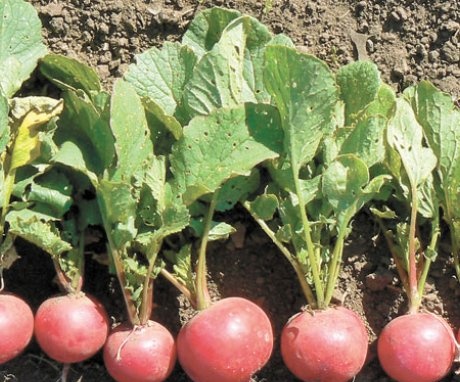
Unfortunately, in my region, planting radishes in the spring is difficult, there are often frosts and plants die.